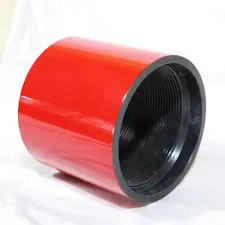- Afrikaans
- Albanian
- Amharic
- Arabic
- Armenian
- Azerbaijani
- Basque
- Belarusian
- Bengali
- Bosnian
- Bulgarian
- Catalan
- Cebuano
- Corsican
- Croatian
- Czech
- Danish
- Dutch
- English
- Esperanto
- Estonian
- Finnish
- French
- Frisian
- Galician
- Georgian
- German
- Greek
- Gujarati
- Haitian Creole
- hausa
- hawaiian
- Hebrew
- Hindi
- Miao
- Hungarian
- Icelandic
- igbo
- Indonesian
- irish
- Italian
- Japanese
- Javanese
- Kannada
- kazakh
- Khmer
- Rwandese
- Korean
- Kurdish
- Kyrgyz
- Lao
- Latin
- Latvian
- Lithuanian
- Luxembourgish
- Macedonian
- Malgashi
- Malay
- Malayalam
- Maltese
- Maori
- Marathi
- Mongolian
- Myanmar
- Nepali
- Norwegian
- Norwegian
- Occitan
- Pashto
- Persian
- Polish
- Portuguese
- Punjabi
- Romanian
- Russian
- Samoan
- Scottish Gaelic
- Serbian
- Sesotho
- Shona
- Sindhi
- Sinhala
- Slovak
- Slovenian
- Somali
- Spanish
- Sundanese
- Swahili
- Swedish
- Tagalog
- Tajik
- Tamil
- Tatar
- Telugu
- Thai
- Turkish
- Turkmen
- Ukrainian
- Urdu
- Uighur
- Uzbek
- Vietnamese
- Welsh
- Bantu
- Yiddish
- Yoruba
- Zulu
Casing and Tubing Connections in Oil and Gas Industry
Casing and Tubing Connections An Overview
Casing and tubing connections are fundamental components of oil and gas operations, providing a pathway for the extraction of hydrocarbons from underground reservoirs. These connections ensure the structural integrity of the wellbore while maintaining a safe environment for the various processes involved in production. Understanding the types and functions of these connections is crucial for engineers and technicians working in the field.
Casing refers to a series of steel pipes that are installed in the borehole to stabilize the well and prevent the collapse of the surrounding rock. It also serves to isolate different pressure zones, protecting freshwater aquifers and preventing contamination. Tubing, on the other hand, is a smaller diameter pipe that runs inside the casing, allowing the production fluids to flow from the reservoir to the surface. The connection between casing and tubing is achieved through different sealing techniques to ensure no leaks occur.
There are several types of connections used for casing and tubing, each designed to meet specific operational requirements
. The most common connection types include threaded (also known as screw) connections, welded connections, and premium connections.casing and tubing connections

Threaded connections are popular due to their ease of installation, allowing for quick assembly and disassembly. However, they also require proper torque specifications to avoid thread damage or leakage. Welded connections provide a strong and permanent bond, which reduces the chance of corrosion and leakage. Nevertheless, they are more time-consuming to install and require careful handling to prevent structural weaknesses. Premium connections, designed for high-pressure and high-temperature applications, offer enhanced sealing capabilities and are often used in challenging environments. These connections are engineered with advanced materials and precision manufacturing techniques to ensure optimal performance under extreme conditions.
One critical aspect of casing and tubing connections is the sealability of the joints. Effective sealing prevents the unwanted flow of fluids and gases, which could lead to well blowouts or environmental contamination. As such, the design and material selection of connections are crucial factors that engineers must consider. Additionally, regular inspections and maintenance should be conducted to ensure the ongoing integrity of these connections.
In conclusion, casing and tubing connections are vital for the safe and efficient extraction of oil and gas. The choice of connection type depends on various factors, including well depth, pressure, and specific operational needs. Continuous advancements in technology and materials will likely lead to innovations in connection design, improving safety and performance in the oil and gas industry. As exploration and production activities increase, so will the necessity for robust casing and tubing connections that can withstand the challenges posed by demanding environments.
-
Tubing Pup Joints: Essential Components for Oil and Gas OperationsNewsJul.10,2025
-
Pup Joints: Essential Components for Reliable Drilling OperationsNewsJul.10,2025
-
Pipe Couplings: Connecting Your World EfficientlyNewsJul.10,2025
-
Mastering Oilfield Operations with Quality Tubing and CasingNewsJul.10,2025
-
High-Quality Casing Couplings for Every NeedNewsJul.10,2025
-
Boost Your Drilling Efficiency with Premium Crossover Tools & Seating NipplesNewsJul.10,2025







